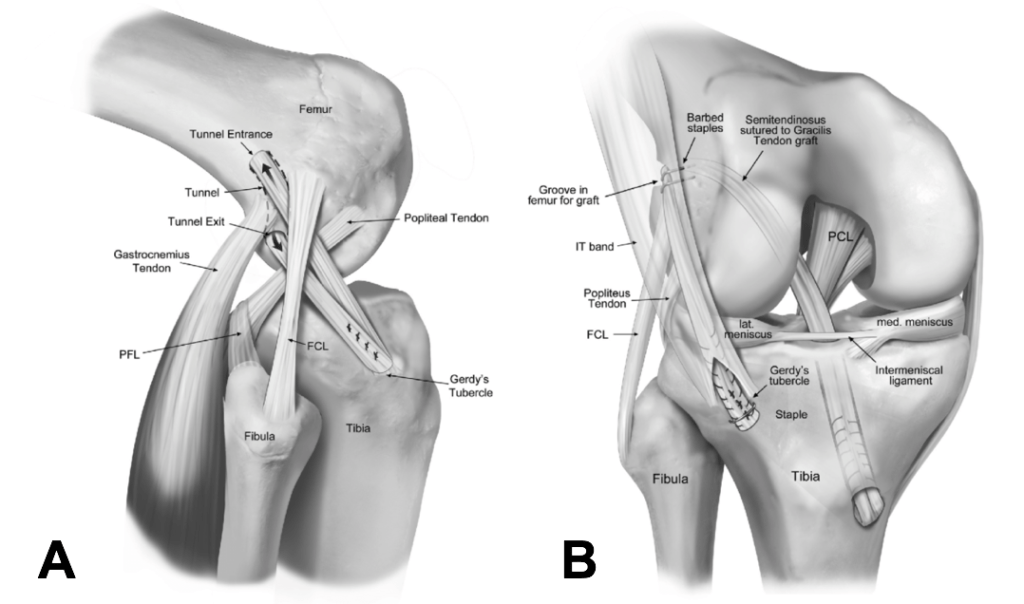ACL injuries are common among athletes and individuals who are active in sports. The ACL is located in the knee, provides stabilization to the joint. It also assists with movements such as pivoting, jumping, and directional shifts. However, due to its weak healing capabilities, ACL reconstruction or surgery is usually required to restore knee function after tear.

Image credit: jeremyburnhammd.com
Knowing the ACL reconstruction procedure, the role of a specialist ACL surgeon and the advancements in surgical procedure can help you to make an informed decision regarding your treatment.
The role of the ACL and why Reconstruction is often necessary
The ACL is the ligament that joins the bone of the femur with the tibia. It plays a vital role in stabilizing your knee while you move. The knee’s stability is seriously impaired when the ACL tears, regardless of whether it’s caused by a sudden twist and landing in a awkward manner or high-impact sports. ACL tears can result in inflammation and pain. They can also make the knee feel as if it “gives out” during your activity.
ACLs are less self-healing than other ligaments, so surgery is the only method to treat them. ACL Surgery typically involves either repairing the ligament in rare cases or reconstructing it using a tendon graft.
What exactly is ACL Reconstruction Surgery
ACL reconstruction is the process of replacing the ligament that has been damaged with a graft. The graft can come from the body of the patient (autograft) or from a donor (allograft). The patellar and quadriceps tendon (BTB) are among the most popular grafts. Each of these types of grafts comes with distinct advantages.
Quadriceps Tendon: This graft is well-known for its strength and low complications at the donor site. It is a reliable stabilization for athletes who have returned from sports that are high-impact.
Patellar Tendon BTB: This graft, often referred to by medical professionals as “the gold standard” for ACL reconstructions, is a great choice for those who need the highest stability.
Dr. Burnham is a fellowship-trained ACL Surgeon who has performed extensive research into the grafts. The results are outstanding regarding knee strength and stability.
Advancements in ACL Reconstruction Techniques
ACL reconstructions have typically placed the ACL graft in an non-anatomic place, which implies that it was not aligned with the original ACL’s natural location. This could lead to less than optimal results, such as decreased stability and increased risk of injury recurrence. The advancements in surgical research and imaging technology have revolutionized ACL reconstruction.
ACL surgeons, like Dr. Burnham today, use modern techniques to position the new ACL in the exact same place where the initial ACL was. The anatomical alignment aligns this new ligament to the knee’s mechanics, and improves the stability and function of the knee. The benefits of precision are:
Reduced chance of re-injury
Better long-term knee health
The lower the risk of developing arthritis
Precision Matters: The Relevance of Graft Sizing
The success of an ACL reconstruction is contingent on the right size of the graft that is appropriate for the patient. Using a combination of MRI imaging and direct surgical observations, surgeons can adapt the graft to the individual’s anatomy. A graft which is too small could not be able to withstand the strain or a graft that is too large can lead to complications. ACL surgeons can speed up the process of healing and functional by customizing every procedure for the patient.
Why should you choose a fellowship trained ACL surgeon?
The knowledge and experience of the surgeon you choose plays a major role in the success of your ACL surgery. Fellow-trained ACL surgeons, such as Dr. Burnham, have specialized expertise and years of experience handling complex knee injuries. They’re equipped with latest surgical techniques and can provide personalized care to each patient, resulting in better results.
Recover and Long-Term Benefits
Following ACL reconstruction, most patients can expect a gradual return to previous activities with the right rehabilitation. Physical therapy is an important component of rehabilitation and helps to strengthen the muscles around and restore full range of motion.
ACL surgery has improved the long-term outcomes for patients, with lower rates for injuries that are recurrences as well as better knee stability. Modern ACL techniques are an excellent alternative for anyone looking to get back on the field or return to an active life.
Final Thoughts
ACL reconstruction is advancing with the help of modern technology research, as well as the experience of fellowship-trained ACL surgeons like Dr. Burnham. Modern surgical methods focus on precision, advanced imaging and customized care, giving patients the best chances for an effective and long-term healing.
ACL injuries can be difficult, but an ACL specialist can help identify your options and locate the best solution for you.